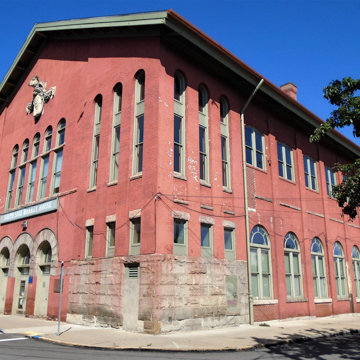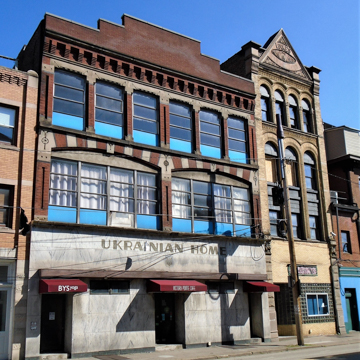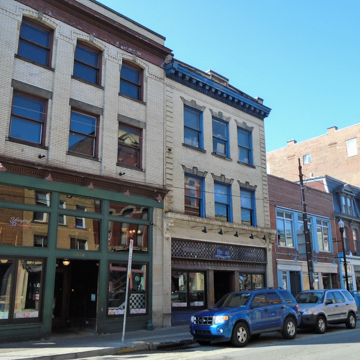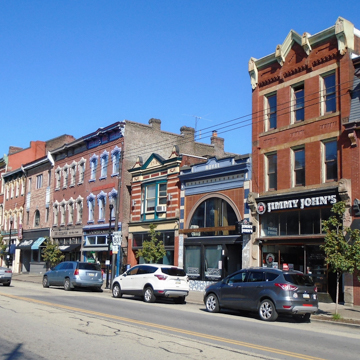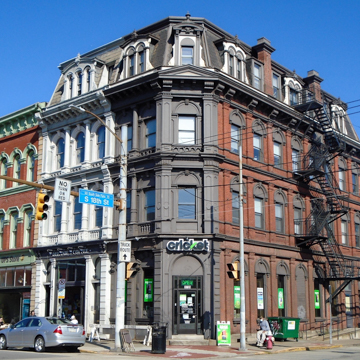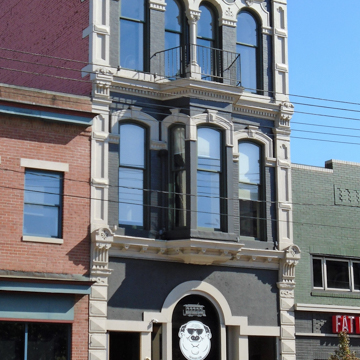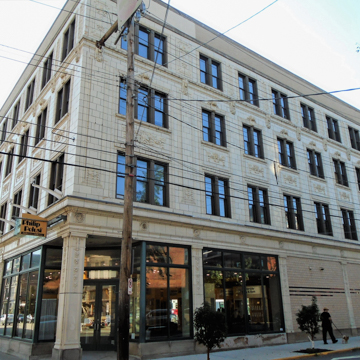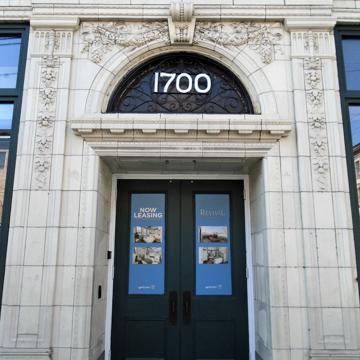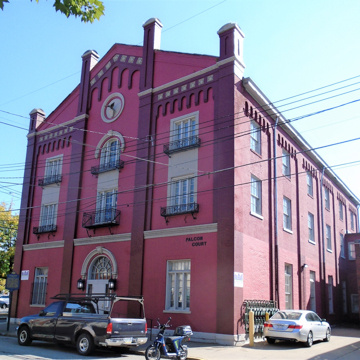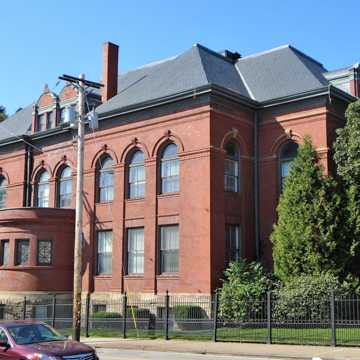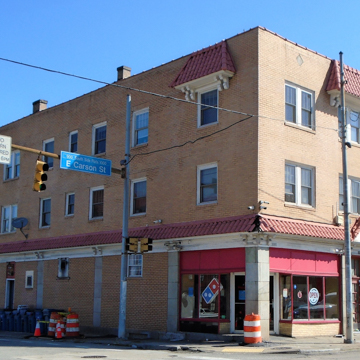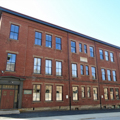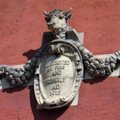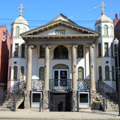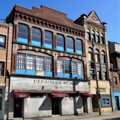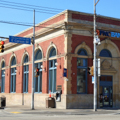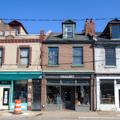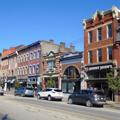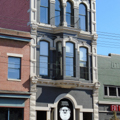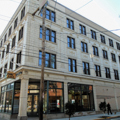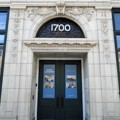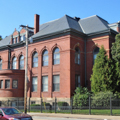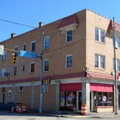Any discussion of the buildings along E. Carson Street begins with the Bedford School Apartments (former Bedford School, 1850; 1997 renovation, EDGE studio; 910 Bingham Street), a three-story Greek Revival schoolhouse from 1850 that was retrofitted in 1997 with a dozen light-filled apartments, several with the original chalkboards still on the walls. The old school was a key element in stabilizing a neighborhood of rich architectural heritage that is under considerable development pressure from a growing population in the newly trendy South Side.
The apartments are two blocks west of Bedford Square (c. 1820–1893; Bingham and S. 12th streets), a relic of Nathaniel Bedford's plan for the settlement of Birmingham, drawn up in 1811. Evidently a copy of the Golden Triangle's Market Square, it works as a squared roundabout for the four arteries (two segments of Bingham Street and two of S. 12th Street) that would otherwise intersect here. Unlike Market Square downtown, Bedford Square retains its market house, South Side
E. Carson Street between 10th and 27th streets was the commercial spine of Bedford's borough of Birmingham. Connected to downtown Pittsburgh in 1818 by the first of the three Smithfield Street bridges (AL4), the street also functioned as a feeder road to the Washington Pike and the National Road (now U.S. 40), both south of the city. E. Carson Street's great boost came with iron making. By 1860, the Clinton Furnace (Station Square today) at its western terminus was balanced on the east by Jones and Laughlin's American Iron Works around 25th Street (the J&L company store survives as a Goodwill store). When the South Side became a mecca for immigrant steelworkers from western and later central and eastern Europe, E. Carson Street was stamped with their numerous churches and fraternal halls. The multidomed St. John the Baptist Ukrainian Catholic Church (AL47) is the most grandiloquent of the group, while the smaller, onion-domed former Cleaves Temple (1913) at 1005 E. Carson (now a café) is the most affecting.
The central mile of E. Carson offers one of the best collections of nineteenth-century commercial architecture in the country. Generally two to four stories in height, most of the standout storefronts are Italianate or Second Empire in style or have such late-nineteenth-century features as segmental arches and bracketed corbel tables, as in the Ukrainian Home at number 1113. The Pittsburgh National Bank of 1902 at number 1736, a Beaux-Arts study in contrasting yellow-gray sandstone and red brick, shows that a limited amount of capital investment came in the twentieth century, too. Rare and precious are examples of Art Deco, the last of the South Side's period styles: two of the best are Siegel's Jewelers at number 1510 and Dotula's Cafe at 1605 E. Carson. While most stores on the street had their lower stories altered over time, a community revitalization project of the late 1960s returned many storefronts to historical accuracy.










